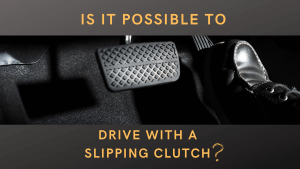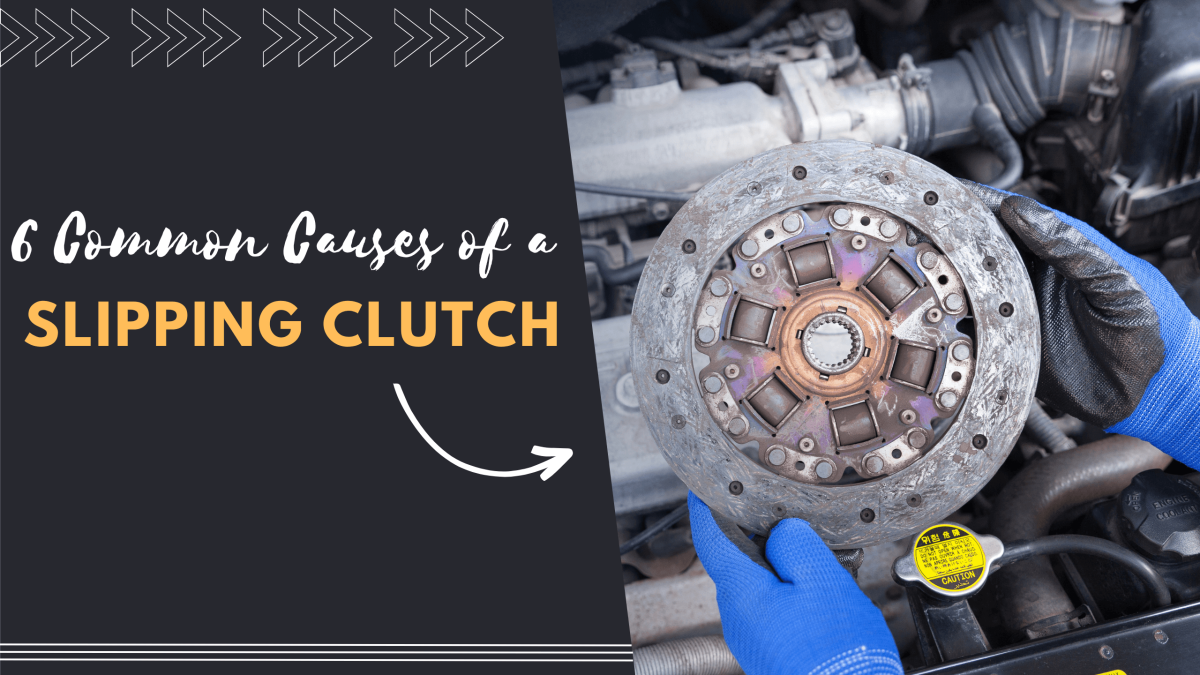November 11, 2022
6 Common Causes of a Slipping Clutch
Do you also have an enthusiastic love for cars? If so, you must be aware of the value of the clutch in cars. If your mechanic ever diagnoses you with a slipping clutch but you’re not sure what it is or what are the common causes of a slipping clutch, don’t worry; we’re here to clear up any confusion.
The clutch is an essential part of the car. It helps in easy gear changing, operating the vehicle smoothly and much more. It engages and disengages the power transmission from the drive shaft to the driven shaft.
In the most basic application, clutches connect and separate two rotating shafts (drive shafts or line shafts). It collects all the energy required to drive from the engine and other internal parts and transfers it to the driven wheels.
As a result of the clutch slipping, the vehicle will not move forward when the clutch engages and disengages without providing any power to the wheels.
Let us understand some of the common causes of a slipping clutch. One can learn that the clutch is slipping when there is a loss of acceleration, or you have to give more pressure for acceleration. You can also know if there is a clutch slipping by changing the gear and accelerating. You can notice this if the engine is racing up but not speeding up. Read up further to know more about slipping clutch problems.
Possible causes of Slipping Clutch
Clutch slippage is merely the beginning of clutch failure. There are several reasons why this could happen, the first of which is that the disc or plate is beginning to wear to the point that it no longer functions effectively. Aggressive driving habits, such as excessive engine rpm, rapid acceleration, or trying to shift gears quickly, can also cause your clutch to malfunction since they put a strain on it. One of the most common causes of a slipping grip may be a failure of clutch connectivity. The following are the causes of Slipping Clutch:
-
Failure of the clutch connectivity
The Clutch connects the engine and the driven wheel. It supplies all the energy from the engine to the driven wheel. Drivers must have experienced that sometimes the clutch doesn’t connect and doesn’t provide the required energy to the driving wheel.
Since the car’s clutch doesn’t provide the required energy to the driven wheel, it fails to connect, and this can be one of the slipping clutch causes. When the driver notices this case, they should take the help of a mechanic to get the clutch repaired or replaced.
-
Damaged Pressure Plate
A clutch’s pressure plate plays a crucial role. The lever and springs move a large metal plate.
The primary clutch plate is held against the engine flywheel by applying pressure to the clutch disc.
To transfer power from the engine to the transmission, it presses the clutch plate against the flywheel. The flywheel attachment also exposes it to heat, which can lead to warping and failure. Friction can also weaken and alter a strong power flow, as friction varies the required pressure.
-
Slave or master cylinder leak
The slave cylinder and master cylinder are a part of the clutch system. When the driver applies pressure on the clutch pedal, the master cylinder transfers pressure to the slave cylinder.
There can be a potential for a leak in the system because the slave cylinder depends on hydraulics to operate. This leak in the master cylinder happens when the car’s clutch is not operating properly or smoothly. It is then, urgent to get the clutch fixed or replaced at the mechanic.
-
Clutch Disc Failure
Between the flywheel and the pressure plate is the clutch disc. A coating that resembles the coating on a brake pad is applied to both sides. It facilitates the engagement or disengagement of the pressure plate and flywheel surfaces. As with brake pads, clutch discs can deteriorate and deform, resulting in clutch slippage.
-
Rusted throwout bearing
The throwout bearing is a minor component in the clutch and plays a role in engaging the clutch pedal. The throwout bearing makes the gear shifting seamless and smooth, making it easy for you to use the clutch.
The bearing controls the connection between the clutch plate and the flywheel. It plays a vital role in the transmitting system.
By doing so, the clutch is able to transmit energy more easily. However, if the throwout bearing rusts, the clutch disc won’t function properly, resulting in clutch slippage. Thus, it is necessary to fix or replace the clutch, as well as to repair the damaged internal parts.
-
Warped Flywheel
A flywheel is a spinning wheel connected to the engine’s outer shaft. The flywheel is made of steel and stores the energy transmitted to the clutch. If there is a problem in shifting the gears, it could be due to warped flywheels. One can feel vibrations, gear slippage, or a burning smell coming from the transmission.
As a result, you should always take care of these things and check on these components. If you discover a problem, you should call a mechanic and the clutch needs to be replaced if there are any severe issues with it.
Is it possible to drive with a slipping clutch?
 In first gear, a clutch will typically start to slip during acceleration, frequently during moderate to heavy acceleration. Although driving with a slipping clutch is still doable at this point, it is advised that you acquire a new clutch as soon as possible. When your car’s clutch starts to slip in higher gears, such as speeds three and up, it indicates that your clutch will likely fail soon and that you need to have it changed immediately.
In first gear, a clutch will typically start to slip during acceleration, frequently during moderate to heavy acceleration. Although driving with a slipping clutch is still doable at this point, it is advised that you acquire a new clutch as soon as possible. When your car’s clutch starts to slip in higher gears, such as speeds three and up, it indicates that your clutch will likely fail soon and that you need to have it changed immediately.
When starting to move away from a stop, ease up on the clutch pedal so that the vehicle moves slowly. Then, hold the pedal partially depressed for two to three seconds, and only then let go of it completely. This slows down the acceleration and lowers the possibility of your clutch slipping.
Avoid pulling off at high RPMs since this can also make your clutch slip.
It’s dangerous to drive with slipping gears which can result in accidents and crashes. If you experience slipping the clutch while driving, you must stop the car nearby or drive it slowly and take it to the nearest service station. Repair or replace the clutch if the clutch is slipping and you cannot fix it yourself.
What is the cost of fixing a slipping clutch?
The cost of a clutch replacement varies depending on the make and model of your car. This means that your costs will vary depending on the damaged parts, the types and models of the vehicles, the location, and the service provided by experts repairing them.
The typical cost of replacing a clutch is $1000. Depending on the problematic parts in your car and how long it will take the repair specialist to fix them, you should budget between $700 and $1500. The cost of the replacement parts ranges from $300 to $800, and the repair will take the automobile mechanic about five hours to complete. The technician performing the work affects the service price as well. A dealership centre, for example, will charge you more than a repair shop.
Conclusion
Clutch slippage prevents the car from moving forward. The clutch engages and disengages without sending any force to the wheels. Due to the common occurrence of slipping clutches in manual transmission cars, clutches should be inspected at 60,000 miles or more.
So here we discussed some common causes of a slipping clutch such as master cylinder leak, warped flywheel and more. As you can see, your clutch has several components susceptible to wear and tear. Maintenance is always less expensive than repair and replacement. The secret to maintaining your car in top condition and minimising repair costs is to take care of it. Take your clutch to your local transmission shop right away if it is slipping and do not wait until the entire system breaks!

